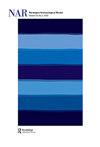流动、仪式化与挖掘理解
IF 1.1
3区 历史学
0 ARCHAEOLOGY
引用次数: 0
摘要
填补公元5世纪罗马帝国灭亡留下的空白的社会、社会、意识形态和政治框架的性质——无论是在帝国边界内外——是关于晚期和后罗马欧洲最紧迫的辩论之一。这场辩论中的一个基本主题是统治者住宅的性质和特征,格莱森和托马斯和斯库尔分别关于爱尔兰和英国南部中世纪早期王室住宅的文章,是理解中世纪早期统治的物质表现的受欢迎的方法。比较方法是关键,因为人们倾向于假设政治发展的单一线性社会进化模型,而不是考虑早期欧洲社区在这一关键时期转变的多种途径。在这两篇文章中,作者开始利用考古学来挑战和建立王权如何在特定遗址和基于景观的案例研究中运作的模型。每一篇论文都提出了重要的新观点。托马斯和斯库尔对英国南部大会堂文化的研究,其核心是对利明格和伦德勒姆的盎格鲁撒克逊权力中心的详细观察。特别是,从挖掘和记录良好的材料序列中进行的细粒度分析尤其受欢迎,因为对熟练从业者和实践社区的关注导致了大厅建筑群中建筑表达的惊人壮举。在这里,毫无疑问,统治作为巩固权力基础的具体战略的物质表达的重要性,以及考古学对理解权力的社会政治和社会经济基础的重要性。同样,Gleeson对Knowth第9-10世纪阶段的观察是“一个基于馈赠和贡品的皇家税收和治理体系的实用性的非常具体的表达”,这是一个令人信服的例子,说明考古学如何帮助确定王权如何在其细节中运作的物质基础,以及允许国王统治的基本储存水平和盈余积累。阅读这两篇文章,脑海中浮现出两个需要进一步思考的领域:流动的性质(和存在)以及住所和仪式之间的区别(或缺乏)。本文章由计算机程序翻译,如有差异,请以英文原文为准。
Itinerancy, Ritualisation and Excavating Understanding
The nature of the societies and social, ideological and political frameworks that filled the voids left by the demise of the Roman Empire in the 5th century AD – both within and beyond the Empire’s boundaries – is one of the most pressing debates about lateand post-Roman Europe. One fundamental topic within that debate is the nature and character of ruler’s residences and the Gleeson, and the Thomas and Scull’s articles on early medieval royal residences in Ireland and southern Britain respectively, are welcome approaches to understanding the material manifestations of early medieval rulership. Comparative approach is the key, for there has been a tendency to assume a uni-linear socio-evolutionary model of political development, rather than considering the multiple pathways by which early European communities were transformed during this crucial period. In these two articles the authors set about using archaeology to challenge and build models for how kingship operated within particular siteand landscapebased case studies. Each paper brings about important new perspectives. Thomas and Scull’s study of great hall culture in southern Britain has at its heart detailed observations from welldocumented Anglo-Saxon power centres at Lyminge and Rendlesham. In particular the fine-grained analysis from well excavated and documented material sequences is particularly welcome as is the focus on skilled practitioners and the communities of practice that led to the quite astonishing feats of architectural expression at great hall complexes. Here, there can be little doubt about neither the importance of material expressions of rulership as a specific strategy of consolidating power bases, nor the importance of archaeology for understanding the socio-political and socio-economic basis of power. Similarly, Gleeson’s observations on the 9th–10thcentury phase of Knowth as a ‘very tangible expression of the practicalities of a system of royal taxation and governance based on render and tribute’ is a convincing example of how archaeology can help pin down the material underpinnings of how kingship operated in its specifics, and the very base levels of storage and surplus accumulation that allowed kings to rule. Reading through these two articles, two areas for further thought sprung to mind: the nature (and the presence) of itinerancy and the divides (or lack of) between residence and ritual.
求助全文
通过发布文献求助,成功后即可免费获取论文全文。
去求助
来源期刊

Norwegian Archaeological Review
ARCHAEOLOGY-
CiteScore
2.10
自引率
0.00%
发文量
13
期刊介绍:
Norwegian Archaeological Review published since 1968, aims to be an interface between archaeological research in the Nordic countries and global archaeological trends, a meeting ground for current discussion of theoretical and methodical problems on an international scientific level. The main focus is on the European area, but discussions based upon results from other parts of the world are also welcomed. The comments of specialists, along with the author"s reply, are given as an addendum to selected articles. The Journal is also receptive to uninvited opinions and comments on a wider scope of archaeological themes, e.g. articles in Norwegian Archaeological Review or other journals, monographies, conferences.
 求助内容:
求助内容: 应助结果提醒方式:
应助结果提醒方式:


